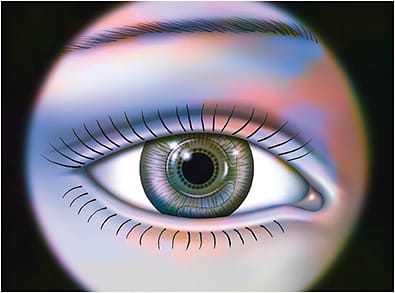REFRACTIVE LENS EXCHANGE (RLE) has proven to be a safe and effective procedure for patients with presbyopia or other refractive errors (REs) who are hoping to reduce their need for glasses and contact lenses. With the advent of new and improved intraocular lens (IOL) options, including trifocal, multifocal, extended depth of focus, and light adjustable lenses, deciding on the optimal strategy for refractive and presbyopia correction has become an important topic of conversation.
While the typical patients undergoing RLE in our practice are those in their 40s and 50s with both hyperopia and presbyopia, we do see other types of patients who are also very interested in this procedure. Due to challenges in accurate lens calculations and corneal factors, certain patient groups are less likely to obtain 20/20 uncorrected vision postoperatively. This includes patients who are post-laser assisted in situ keratomileusis (LASIK), post-radial keratotomy, those with irregular astigmatism or keratoconus, those with very long or short axial lengths, and those with steep or flat corneas.
One common group of patients interested in RLE are those who have previously undergone myopic LASIK and were very happy with their vision but now are experiencing a need to wear glasses for distance, reading, or both. Patients with a history of myopic LASIK are a more challenging group of patients to satisfy with range of vision IOLs, as they experienced excellent vision following LASIK and have similar expectations when further surgery is performed. The challenge is that patients with a history of myopic LASIK are less likely to end up with 20/20 uncorrected visual acuity (UCVA) postoperatively. In a presentation at the 2022 annual meeting of the American Society of Cataract and Refractive Surgery, Dr. John Blaylock reported that less than 30% of post-myopic LASIK patients receiving a trifocal IOL ended up with UCVA distance vision of 20/20, and in fact, 23% of eyes were not correctable to 20/20 vision postoperatively.

An even larger concern for post-myopic LASIK patients interested in RLE is the potential risk for retinal holes, retinal tears, and retinal detachments (RDs) following surgery. A preoperative retinal exam and macular optical coherence tomography (OCT) are important tests if the plan is to proceed with an RLE. However, even when both the peripheral retinal evaluation and macular OCT are normal, patients with long axial lengths have an increased risk for RD following RLE. Recently, a peer-reviewed online calculator for RD risk after RLE was made available. It can be found at https://medisch.fyeo.nl/retinal-detachment/retinal-detachment-calculator/ . The FYEO-Medical RRD Risk Calculator uses the patient’s age, the axial length, the presence or absence of lattice degeneration, and the presence or absence of a posterior vitreous detachment (PVD) to provide an overall risk of RD following RLE.
For example, let us consider a 52-year-old man with a history of LASIK 20 years ago. His RE prior to LASIK was -8.00. Now, his RE is -4.00, and he is not interested in contact lenses. The preoperative evaluation revealed an axial length of 28.2 and a PVD on macular OCT. Using the calculator with an inputted refractive error of -12.00 (given a pre-LASIK RE of -8.00 and a current additional 4.00D of myopia), we find this patient has a yearly rhegmatogenous RD (RRD) risk of 0.19% at baseline. After cataract surgery, his RRD risk would change by less than 0.01%, even in the presence of vitreous loss. In such a patient, surgeons can feel safe proceeding with RLE without a significant change in the risk of RD and can discuss the results of the calculator with their patients preoperatively.
Another similar example would be a 55-year-old man with a history of LASIK 25 years ago with a prior refractive error of -5.00. He now is plano but no longer wants to use reading glasses and is inquiring about the utility of multifocal IOLs. Preoperative evaluation shows an axial length of 27.4 and no PVD noted on exam or on macular OCT; however, we do see some inferior lattice degeneration. Using the calculator with a refractive error of -5.00, we find this patient has a yearly RRD risk of 0.16% at baseline. After a cataract surgery, his RRD risk would increase to an astounding 6.62%. In the presence of vitreous loss, the risk would climb to 8.70%. Although at first glance, the patients in this and the preceding example appear to be quite similar, the calculator reveals astounding differences in RRD risk after cataract surgery. In this clinical scenario, the surgeon may want to consider alternative options, such as contact lenses, presbyopia-correcting eye drops, reading glasses, and/or laser vision correction in 1 eye targeted to improve reading.
In summary, RLE is an important tool to consider when evaluating presbyopic patients who are interested in a surgical correction for their condition, especially those who cannot tolerate or prefer not to use glasses or contact lenses. However, in patients who have previously undergone myopic refractive surgery (and therefore have a longer axial length), it is important to consider the risk of complications in these patients. Using the FYEO-Medical RRD Risk Calculator, the surgeon can appropriately identify eyes that are at greater risk for experiencing an RD after RLE and therefore be prompted to consider an alternative treatment. ■











